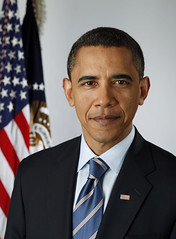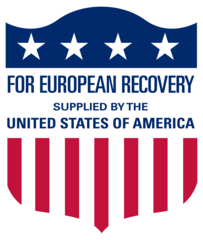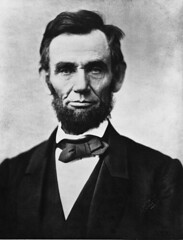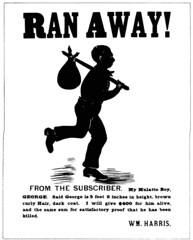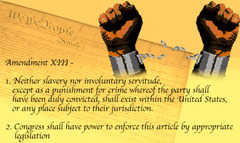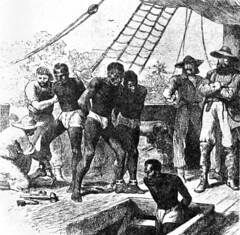| 9824017417 | The Great American Desert | Name given to lands between the Mississippi and the Pacific Coast before 1860. There was very little rainfall in this area and the conditions were poor for settlement. (p. 339) |  | 0 |
| 9824017438 | 100th meridian | The plains west of this meridian had few trees and usually received less than 15 inches of rain per year. This meridian crosses near the middle of Nebraska. (p. 339) |  | 1 |
| 9824017418 | buffalo herds | These animals were essential to the nomadic Native American tribes. In early 19th century there were 15 million of these animals on the Great Plains, but by 1900 they were nearly wiped out. (p. 339) |  | 2 |
| 9824017439 | Great Plains | The region west of the Mississippi River and east of the Rocky Mountains. (p. 339) |  | 3 |
| 9824017440 | mineral resources | From 1848 to the 1890s, gold and silver strikes occurred in what became the states of California, Colorado, Nevada, Montana, Arizona, and South Dakota. (p. 340) |  | 4 |
| 9824017441 | mining frontier, boomtowns | In 1848, the discovery of gold in California caused the first flood of newcomers to the territory. Gold and silver were later discovered in many other areas of the west. These discoveries caused towns to grow up very quickly, then often lose population and collapse after the mining was no longer profitable. (p. 340) |  | 5 |
| 9824017419 | Chinese Exclusion Act of 1882 | In the 1860s, about one-third of the western miners were Chinese immigrants. Native-born Americans resented the competition of these immigrants. In 1862, this act was passed to prohibit further immigration by Chinese laborers to the United States. (p. 341) |  | 6 |
| 9824017442 | commercial cities | A few towns that served the mines, such as San Francisco, Sacramento, and Denver, grew into prosperous cities. (p. 341) |  | 7 |
| 9824017420 | longhorns, vaqueros | The name for the cattle which were brought to Texas from Mexico. The name for the Mexican cowboys who raised and rounded up the cattle in Texas. (p. 341) |  | 8 |
| 9824017443 | cattle drives | Moving the cattle from Texas to railroad towns in Kansas. (p. 342) |  | 9 |
| 9824017444 | barbed wire | These fences became common, they cut off the cattle's access to the open range. (p. 342) |  | 10 |
| 9824017421 | Joseph Glidden | He invented barbed wire to help farmers fence in their lands on the plains. (p. 342) |  | 11 |
| 9824017445 | Homestead Act | In 1862, this act offered 160 acres of public land free to any family that settled on it for 5 years. (p. 342) |  | 12 |
| 9824017446 | dry farming | This technique along with deep-plowing enabled settlers to survive on the Great Plains. (p. 342) |  | 13 |
| 9824017447 | Great Plains tribes | These nomadic tribes, such as the Sioux, Blackfoot, Cheyenne, Crow, and Comanche, had given up farming in colonial times after the introduction of the horse by the Spanish. By the 1700s, they had become skillful horse riders and their lives centered on hunting buffalo. (p. 343) |  | 14 |
| 9824017448 | Southwest tribes | These tribes in the Southwest, such as Navajo and Apache adopted a settled life, raising crops and livestock, and producing arts and crafts. (p. 343) |  | 15 |
| 9824017449 | federal treaty policies | The Indian Appropriation Act of 1871 ended recognition of tribes as independent nations by the federal government and nullified previous treaties made with the tribes. (p. 345) |  | 16 |
| 9824017450 | causes of Indian wars | In the late 19th century, the settlement of the thousands of miners, ranchers, and homesteaders on American Indian lands led to violence. (p. 344) |  | 17 |
| 9824017422 | Little Big Horn | In 1876, the Sioux Indians, led by Crazy Horse and Sitting Bull, massacred the U.S. 7th Cavalry led by General Custer. This was the last major battle between the U.S. Army and the American Indians. (p. 345) |  | 18 |
| 9824017423 | assimilationists | The idea that Native Americans should be integrated into American society by becoming educated, adopting American culture, customs, and Christianity. (p. 345) |  | 19 |
| 9824017424 | Helen Hunt Jackson | The author of "A Century of Dishonor", which created sympathy for Native Americans, but also generated support for ending American Indian culture through assimilation. (p. 345) |  | 20 |
| 9824017425 | Dawes Act of 1887 | This act supported the idea of assimilation of the American Indians. It divided tribal lands into plots of up to 160 acres. U.S. citizenship was granted to those who stayed on the land for 25 years and adopted the habits of American life. (p. 345) |  | 21 |
| 9824017426 | Ghost Dance movement | This religious movement was a last effort of Native Americans to resist U.S. government domination and drive whites from their ancestral lands. In an effort to suppress the movement, at the Battle of Wounded Knee more that 200 American Indians were killed. This battle marked the end of the Indian Wars. (p. 345) |  | 22 |
| 9824017451 | Indian Reorganization Act of 1934 | In 1934, this act promoted the re-establishment of tribal organization and culture. Today, more than 3 million American Indians, belonging to 500 tribes, live within the United States. (p. 346) |  | 23 |
| 9824017452 | Mexican War aftermath | After the Mexican War ended in 1848, the Spanish-speaking landowners in California and the Southwest were guaranteed their property rights and granted citizenship. However, drawn-out legal proceeding after resulted in the sale or la of lands to new Anglo arrivals. (p. 346) |  | 24 |
| 9824017453 | Spanish-speaking areas | In 1848, the New Mexico territories, border towns, and the barrios of California were dominant spanish-speaking regions. (p. 346) |  | 25 |
| 9824017454 | Migration for jobs | Mexican Americans moved to find work, such as the sugar beet fields and mines of Colorado, and the building of western railroads. (p. 346) |  | 26 |
| 9824017455 | deforestation | The conservation movement was sparked by removal of large number of trees. (p. 346) |  | 27 |
| 9824017456 | Yellowstone, Yosemite | In 1872, this area of Wyoming was declared the first national park. In 1864 this area in California was declared a state park, later it became a national park. (p. 346) |  | 28 |
| 9824017457 | Department of the Interior | Carl Schurz, as Secretary of the Interior in the 1880s, advocated the creation of a forest reserves and a federal forest service to protect federal lands from exploitation. (p. 347) |  | 29 |
| 9824017458 | conservationists and preservationists | Conservationist believed in scientific management and regulated use of natural resources, preservationists went a step further, and aimed to preserve natural areas from human interference. (p. 347) |  | 30 |
| 9824017459 | Forest Reserve Act of 1891 | This act withdrew federal timberland from development and regulated their use. (p. 347) |  | 31 |
| 9824017460 | Forest Management Act of 1897 | This act withdrew federal timberland from development and regulated their use. (p. 347) |  | 32 |
| 9824017461 | John Muir, Sierra Club | In 1892, he founded this organization, with the goal of preserving some natural areas from human intervention. (p. 347) |  | 33 |
| 9824017427 | New South | After the Civil War, the South was in a period of recovery. There was a new vision for a self-sufficient southern economy built on economic diversity and laissez-faire capitalism. (p. 347) |  | 34 |
| 9824017428 | Henry Grady | Journalist from Georgia who coined the phrase "New South". Promoted his ideas through the Atlanta Constitution, as editor. (p. 347) |  | 35 |
| 9824017462 | Birmingham steel | This Southern city developed into one the nation's leading steel producers. (p. 347) |  | 36 |
| 9824017463 | Memphis lumber | This Southern city prospered as the center of the South's growing lumber industry. (p. 347) |  | 37 |
| 9824017464 | Richmond tobacco | This Southern city became the capital of the nation's tobacco industry. (p. 347) |  | 38 |
| 9824017465 | integrated rail network | After the Civil War, the Southern railroad companies rapidly converted to standard-guage rails, which integrated them into the national rail system. (p. 347) |  | 39 |
| 9824017466 | agriculture's dominance | Despite progress and growth after the Civil War, the South remained a mostly agricultural based economy. (p. 347) |  | 40 |
| 9824017467 | sharecropping; tenant farmers | After the Civil War, most Southerners of both races remained in traditional roles and barely got by from year to year as sharecroppers and farmers. (p. 348) |  | 41 |
| 9824017429 | George Washington Carver | An African-American scientist, who promoted planting of diverse crops such as peanuts, sweet potatoes, and soybeans. (p. 348) |  | 42 |
| 9824017468 | Tuskegee Institute | An industrial and agricultural school established by Booker T. Washington to train blacks. (p. 348) |  | 43 |
| 9824017469 | white supremacists | This group favored separating (segregating) public facilities, as a means of treating African American as social inferiors. (p. 349) | 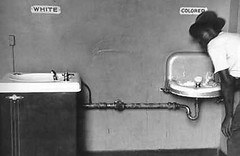 | 44 |
| 9824017470 | Civil Rights Cases of 1883 | In 1883, the Supreme Court ruled that Congress could not legislate against the racial discrimination practiced by private citizens, which included public businesses. (p. 349) |  | 45 |
| 9824017430 | Plessy v. Ferguson | An 1896, Supreme Court landmark case, which ruled that separate but equal accommodations in public places were constitutional and did not violate the 14th amendment. (p. 349) |  | 46 |
| 9824017431 | Jim Crow laws | In the 1870s, the South passed segregation laws which required separate washrooms, drinking fountains, park benches, and most other public facilities, for blacks and whites. (p. 349) |  | 47 |
| 9824017471 | literacy tests, poll taxes, grandfather clauses | After Reconstruction, various political and legal devices were created to prevent southern blacks from voting. |  | 48 |
| 9824017472 | white primaries, white juries | After Reconstruction, discrimination took many forms. Political party primaries were created for whites only, and African Americans were barred from serving on juries. (p. 349) |  | 49 |
| 9824017473 | lynch mobs | In the 1890s, more than 1,400 African American men were lynched (hung by a mob without trial) by Southerns. |  | 50 |
| 9824017474 | economic discrimination | After Reconstruction, economic discrimination was widespread in the South. Most African Americans were kept out of skilled trades and factory jobs. African Americans remained in farming and low-paying domestic work. (p. 349) |  | 51 |
| 9824017475 | African American migration | In 1894, the International Migration Society was formed to help blacks emigrate to Africa. Other blacks moved to Kansas and Oklahoma. (p. 350) |  | 52 |
| 9824017432 | Ida B. Wells | She was the editor of a black newspaper, she campaigned against lynching and Jim Crow laws. (p. 349) |  | 53 |
| 9824017433 | Booker T. Washington | Famous African-American, who established an industrial and agricultural school for African Americans in 1881. He taught the virtues of hard work, moderation, and economic self-help. In 1900, he organized the National Negro Business League to support businesses owned by African Americans. (p. 350) |  | 54 |
| 9824017476 | economic cooperation | Booker T. Washington's National Negro Business League emphasized racial harmony and economic cooperation. (p. 350) |  | 55 |
| 9824017477 | markets and farmers | In the late 1800s, farming became increasingly commercialized and specialized. They became dependent on large and expensive machinery and small, marginal farms were often driven out of business. (p. 350) |  | 56 |
| 9824017478 | crop price deflation | After the Civil War, increased American and foreign food production caused a downward pressure on prices. For instance, corn per bushel prices, went from $.78 in 1867 to .$.28 in 1889. (p. 351) |  | 57 |
| 9824017479 | railroads and middlemen | Railroads and middlemen were able to charge high or discriminatory rates in the food supply chain because they had little competition. (p. 351) |  | 58 |
| 9824017480 | National Grange Movement | In 1868, this organization was created primarily as a social and educational help for farmers. (p. 351) |  | 59 |
| 9824017481 | cooperatives | Grangers established these business, owned and run by the farmers, to save the costs charged by middlemen. (p. 351) |  | 60 |
| 9824017482 | Granger laws | In some states, the Grangers, with help from local businesses, successfully lobbied their state legislatures to pass laws regulating the rates charged by railroads and elevators. (p. 351) |  | 61 |
| 9824017434 | Munn v. Illinois | Supreme Court case in 1877, which upheld the right of a state to regulate businesses of a public nature, such as railroads. (p. 352) |  | 62 |
| 9824017435 | Wabash v. Illinois | Supreme Court case in 1886, which ruled that individual states could not regulate interstate commerce. (p. 352) |  | 63 |
| 9824017436 | Interstate Commerce Commission | The first federal regulatory agency created to regulate interstate commerce which had the power to investigate and prosecute pools, rebates, and other discriminatory practices. (p. 352) |  | 64 |
| 9824017437 | Ocala Platform of 1890 | In 1890, a national organization of farmers, called the National Alliance, met in Florida to address the problems of rural America. It fell short of becoming a political party, but many of the reform ideas would become part of the Populist movement. (p. 352) |  | 65 |
| 9824017483 | census of 1890 | The census of 1890 declared that except for a few pockets, the entire frontier had been settled. (p. 343) |  | 66 |
| 9824017484 | Frederick Jackson Turner, "The Significance of the Frontier in American History" | He argued that 300 years of frontier experience had shaped American culture by promoting independence and individualism. (p. 343) |  | 67 |
| 9824017485 | role of cities, "Nature's Metropolis" | Book written by William Cronon, it argued that the frontier and cities grew up together, they were dependent on each other. (p. 353) |  | 68 |












































